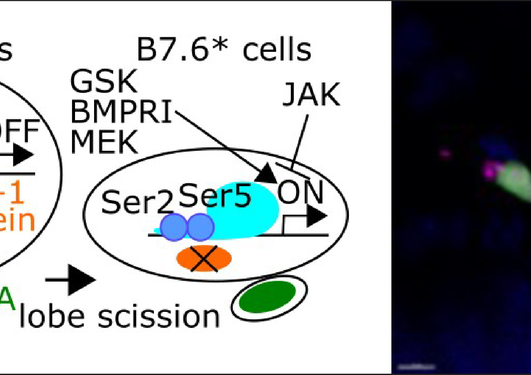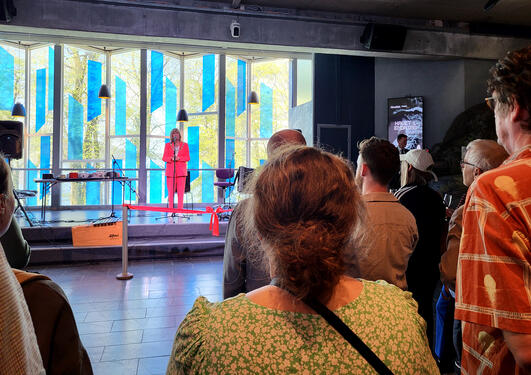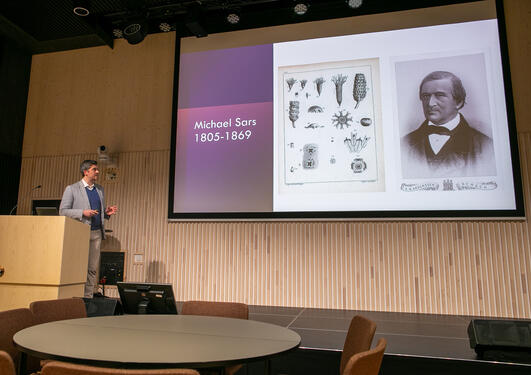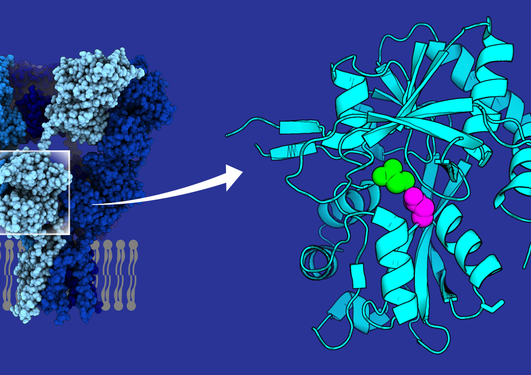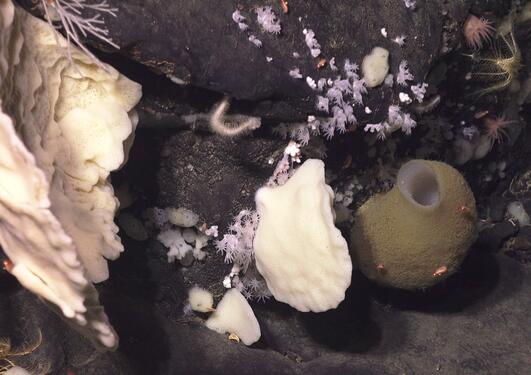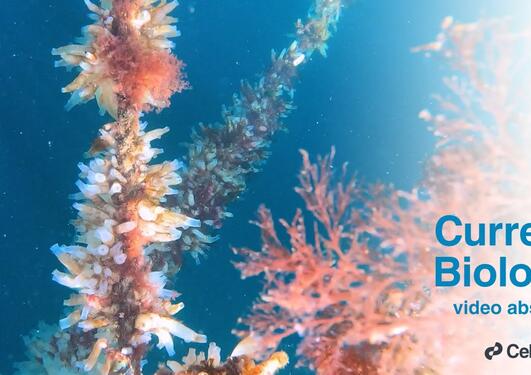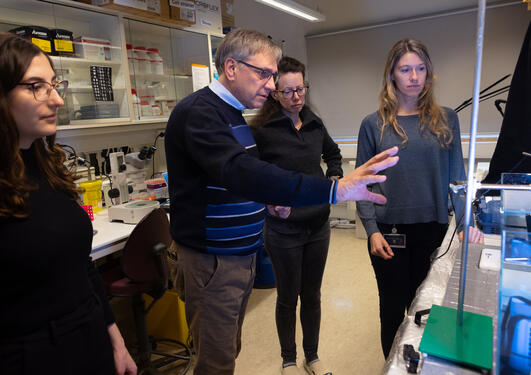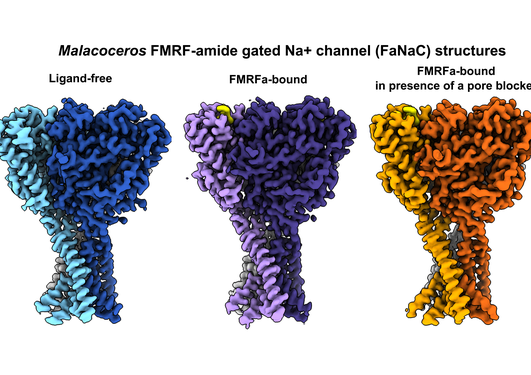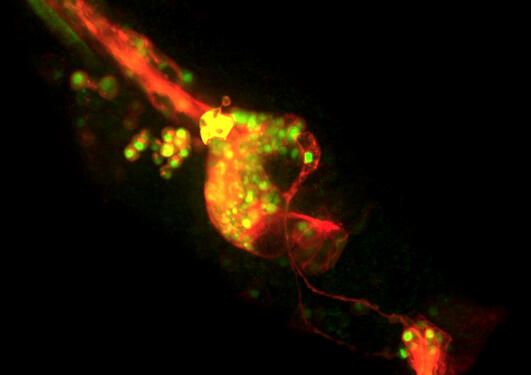News archive for Michael Sars Centre
Light is probably the most varying environmental variable in pelagic ecosystems, and the most ignored in ecological studies. In this Ocean Science Bar, you will learn how light structures the distribution of zooplankton and fish.
On the 12th of August 2024, PhD candidate Aishwarya Ravi successfully defended her thesis titled: “Polarized Recruitment of Secretory Vesicles in the Choanoflagellate Salpingoeca rosetta: Insights into the Origin of Neurosecretion”
Emily Claereboudt will pursue a project in chemical ecology after receiving a Marie Sklodowska-Curie Postdoctoral Fellowship, while Ruth Styfhals will lead a study on the developmental origin of nervous systems as part of an EMBO Postdoctoral Fellowship.
In a recent article, researchers from the Steinmetz group characterized the astonishing ability of sea anemones to adapt to food availability by growing and shrinking their body throughout their lives.
On the 14th of June 2024, PhD candidate Giulio Rosano successfully defended his thesis titled: “Evolution of the delta family of ionotropic glutamate receptors”
Offering a unique perspective on the latest advances in Developmental Biology, the Nordic Developmental Biology Societies & Michael Sars Symposium Joint Meeting attracted a diverse audience and strengthened connections between Nordic and international institutions.
On the 21st of May 2024, PhD candidate Yuhong Wang successfully defended her thesis titled: “Nature's View of Ionotropic Glutamate Receptors”
A new article from the Christiaen group offers crucial insights into the onset of zygotic gene expression in the germline of Ciona, uncovering a two-step model for genome activation.
Bergen Aquarium hosted an inaugural event for their latest exhibit, "Havet i endring" or "The Changing Ocean." The new installation features a 1200L aquarium showcasing jellyfish generously gifted by the Centre.
Amidst the festivities of One Ocean Week, researchers from the Michael Sars Centre embraced the opportunity to engage with the public on Family Day and participate in the Ocean Outlook conference.
Researchers from the Lynagh Group reveal how minor amino acid variations in ionotropic glutamate receptors (iGluRs) can lead to major functional changes across animal phyla.
Deep sea research is a gateway to unlocking mysteries both within our planet and beyond, offering insights that can have profound implications for science, industry, and our understanding of life in the universe.
A new video abstract for Current Biology explores how specific chemical cues control the settlement and metamorphosis of Ciona larvae. Watch the film to hear researchers from the Chatzigeorgiou Group discuss their findings.
Professor Giovanni Zambon and researcher Dr. Valentina Zaffaroni Caorsi from the University of Milan-Bicocca recently visited the Centre to conduct preliminary experiments as part of the pan-European project DeuteroNoise.
After six months at the Centre, research interns Catharina Kolner and Célestine Allombert-Blaise are off to the next steps of their path as young scientists. With their dedication and enthusiasm, they have made invaluable contributions to their respective research projects.
Researchers from the Michael Sars Centre engaged visitors with interactive exhibits and offered insights into marine life fostering scientific curiosity and education among guests of all ages.
Neuropeptides and their receptors are ubiquitous in animals, but the way they interact with each other is poorly known. In a new article, researchers described the dynamic structure of a FMRFamide receptor and novel tools to predict the function of these proteins in animals.
A new paper from the Chatzigeorgiou Group unravels the enigmatic sensory strategies of planktonic larvae using Ciona intestinalis as a model organism.
Pages
- December 2025 (2)
- October 2025 (2)
- September 2025 (2)
- August 2025 (1)
- July 2025 (1)
- June 2025 (2)
- May 2025 (2)
- April 2025 (2)
- March 2025 (1)
- February 2025 (4)
- January 2025 (4)
- December 2024 (1)
- November 2024 (2)
- October 2024 (6)
- September 2024 (2)
- August 2024 (4)
- July 2024 (2)
- June 2024 (3)
- May 2024 (2)
- April 2024 (4)
- March 2024 (2)
- February 2024 (3)
- January 2024 (1)
- December 2023 (2)
- November 2023 (1)
- October 2023 (3)
- September 2023 (3)
- August 2023 (4)
- July 2023 (1)
- June 2023 (3)
- May 2023 (2)
- April 2023 (3)
- February 2023 (3)
- January 2023 (2)
- December 2022 (1)
- November 2022 (1)
- October 2022 (1)
- September 2022 (2)
- August 2022 (1)
- June 2022 (1)
- March 2022 (2)
- January 2022 (1)
- December 2021 (1)
- November 2021 (1)
- April 2021 (1)
- March 2021 (1)
- October 2020 (2)
- August 2020 (1)
- June 2020 (1)
- April 2020 (2)
- March 2020 (1)
- October 2019 (1)
- August 2019 (1)
- June 2019 (1)
- April 2019 (1)
- February 2019 (1)
- January 2019 (2)
- February 2017 (1)







